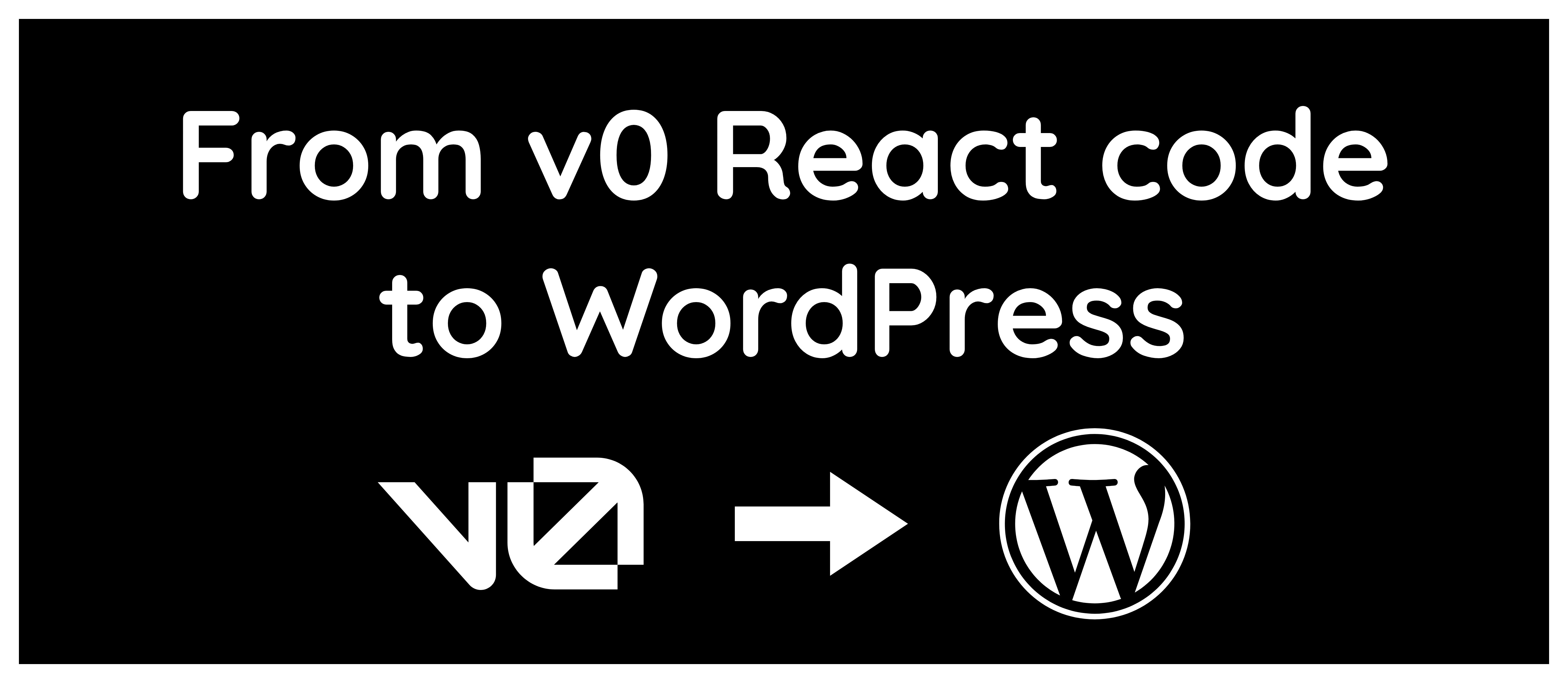In the world of web development, you usually have to pick your poison: clean code or fast delivery. But what if you could have both?
Recently, I’ve been experimenting with a new workflow that combines V0.dev, Tailwind CSS, and WordPress Gutenberg blocks to build high-quality websites quickly, without sacrificing design, performance, or maintainability. And the first project to test it out? A full redesign of GLD Commercial, a commercial real estate firm based in Iowa.
This new approach is especially useful for business owners and marketers who don’t have time to micromanage a custom design, and for developers who are tired of bloated page builder code. Here’s how it works, and why it might just change the way you build WordPress sites.
Step 1: Use V0.dev to Generate the Layout
If you haven’t tried V0.dev yet, it’s a free tool by the team behind Vercel that lets you generate fully designed React components just by describing what you want. You feed it your content or ideas, in our case, page-by-page summaries from GLD’s existing site, and it outputs polished, professional-looking layouts built with Tailwind CSS.
Think of it like ChatGPT, but for UI. It doesn't just generate dummy layouts, it gives you working code that looks great and follows modern frontend best practices.
What makes this powerful:
-
You don’t need to be a designer
-
Layouts are mobile-responsive out of the box
-
Tailwind is a very popular, powerful tool that most developers are already familiar with
-
It drastically reduces the time it takes to get from idea to layout
Step 2: Convert V0 Components into WordPress Blocks
Now comes the fun part: taking the React components that V0 generates and turning them into WordPress Gutenberg blocks. Since Gutenberg itself is built with React, there’s already some shared DNA, but it’s not as simple as copy and paste.
We take each component and wrap it inside a Gutenberg block structure, using WordPress’s block editor APIs and server-side rendering for dynamic content where needed. The Tailwind styles remain intact, and the structure stays pixel-perfect. What you see in V0 is exactly what you get on the WordPress front end.
Why not just paste the HTML into a page? Because turning it into a block makes it reusable, composable, and manageable inside the block editor, without needing to touch the code again. And unlike Elementor or other page builders, we’re not layering on dozens of extra div's or CSS overrides to make it work.
Step 3: Launch, Without the Bloat
Traditional WordPress sites that use visual page builders (like Elementor, Divi, or WPBakery) often suffer from "nested div hell." The markup becomes deeply layered, difficult to maintain, and performance-hurting. This new approach avoids that entirely.
Because we're starting with V0’s clean layout structure and Tailwind’s utility-first classes, the final HTML is lean. No extra wrappers, no duplicated styles, and no mystery classes. It’s easier for developers to read and modify, and it results in faster page loads and better Lighthouse scores.
Who Is This Workflow For?
✅ Non-designers and agencies
If you struggle to come up with layouts or feel stuck staring at a blank page, V0.dev does the heavy lifting. It helps you go from concept to prototype in minutes, not weeks.
✅ WordPress freelancers and developers
Stop fixing builder bugs. Start with clean Tailwind components, turn them into Gutenberg blocks, and give your clients something that loads fast, looks great, and is easy to maintain.
✅ Business owners and marketers
You get a professionally designed site that looks amazing on every device, is fast to load, and doesn’t rely on a maze of plugins or hacks to function.
The Result: A Real Site, Already Live
You can see this workflow in action here:
👉 gld.crweb.design
Every section you see, from the homepage hero to the testimonials, started as a V0 component and became a native WordPress block or template. It’s a great example of how far you can push WordPress when you combine modern tooling with classic publishing power.
Final Thoughts
This isn’t just a proof of concept, it’s the foundation for how I plan to build future WordPress projects. By combining the rapid design capabilities of V0.dev with the customizability of Gutenberg blocks, we get:
-
Faster development cycles
-
Better code quality
-
Responsive design out of the box
-
No reliance on bloated builders
-
A workflow that’s actually fun to use
Got questions about how this works under the hood? Or want help trying it out on your next site? Feel free to reach out, I’m happy to share what I’ve learned.

